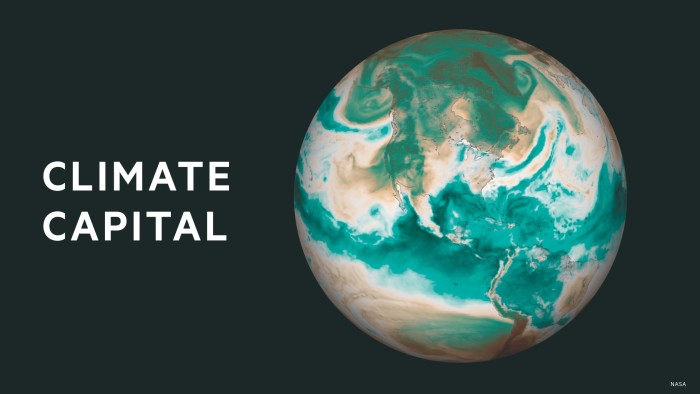Last month was the hottest January on record, surprising scientists who expected the cooling La Niña weather cycle in the tropical Pacific to slow almost two years of record-high temperatures.
January ranked as the third hottest month globally on record, with a surface air temperature of 13.23C — 1.75C above the pre-industrial average — according to the Copernicus Climate Change service, the EU’s Earth observation agency.
The warming, despite the emergence of La Niña in December, is set to fuel concerns that climate change is accelerating at a time when countries such as the US, the world’s largest historical polluter, pull back on commitments to reduce emissions.
Bill McGuire, emeritus professor of geophysical and climate hazards at UCL, said the January data was “both astonishing and, frankly terrifying”, adding: “On the basis of the Valencia floods and apocalyptic Los Angeles wildfires, I don’t think there can be any doubt that dangerous, all-pervasive, climate breakdown has arrived. Yet emissions continue to rise.”

Samantha Burgess, strategic lead for climate at the European Centre for Medium-Range Weather Forecasts, which oversees Copernicus, said January was “another surprising month, continuing the record temperatures observed throughout the past two years, despite the development of La Niña”.
Copernicus found Europe had experienced its second-hottest January ever, despite below-average temperatures across Iceland, the UK, Ireland, northern France and parts of Scandinavia.
The average sea surface temperature globally was 20.78C, the second-highest value on record for the month after January last year. Although the central equatorial Pacific had become cooler, temperatures were “unusually high in many other ocean basins and seas”, the scientists said.
Richard Allan, professor in climate science at the University of Reading in the UK, said much of the “global sea surface remained remarkably warm in early 2025, primarily a result of human-caused warming”.
He added that natural weather fluctuations from week to week can “cause warmer or colder conditions over continental areas” which he said “contributed to the unexpected record global temperatures at the beginning of 2025”.
The naturally occurring La Niña weather phenomenon typically results in cooler global temperatures, while temperatures increase during its opposite El Niño warming phase.
El Niño ended in May 2024, while delayed weaker La Niña conditions emerged in the equatorial Pacific Ocean in December, according to the National Oceanic and Atmospheric Administration.
Earlier this week, James Hansen, the scientist who sounded the alarm about climate change in the 1980s, said this year was likely to be of a similar average temperature to 2024, despite La Niña.
Last year was the hottest on record, with the global average temperature rising 1.5C above pre-industrial levels.
Climate Capital

Where climate change meets business, markets and politics. Explore the FT’s coverage here.
Are you curious about the FT’s environmental sustainability commitments? Find out more about our science-based targets here








